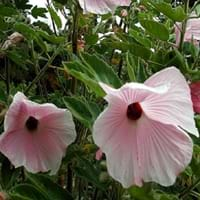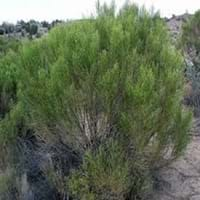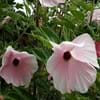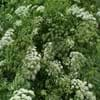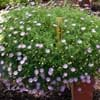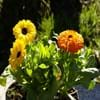Life Span
Annual and Perennial
Perennial
Type
Flowering Plants, Ornamental Plants, Shrub, Tree
Shrub
Origin
Eastern Australia
Hybrid origin, Southwestern United States
Types
Not Available
Not Available
Habitat
gardens, Grassland, Homesteads, Subtropical climates, tropical environments
riparian zones, Semi desert, Upland
USDA Hardiness Zone
9-15
8-10
AHS Heat Zone
Not Available
12-1
Sunset Zone
21,22
7, 8, 9, 10, 11, 12, 13, 14
Habit
Oval or Rounded
Spreading
Flower Color
Light Pink, Not Available, Pink
White
Flower Color Modifier
Bicolor
Not Available
Fruit Color
Not Available
creamy white
Leaf Color in Spring
Green, Light Green, Not Available
Green
Leaf Color in Summer
Green, Not Available
Green
Leaf Color in Fall
Green, Light Green, Not Available
Green
Leaf Color in Winter
Light Green
Green
Leaf Shape
Heart shaped, toothed with three to five lobes
Oblanceolate , Ovate
Plant Season
Spring, Summer, Fall, Winter
Spring, Summer, Fall, Winter
Sunlight
Full Sun, Partial Sun
Full Sun
Type of Soil
Loam
Clay, Loam, Sand
The pH of Soil
Neutral
Acidic, Neutral, Alkaline
Soil Drainage
Well drained
Well drained
Bloom Time
Early Summer, Summer, Late Summer, Early Fall, Fall, Indeterminate
Spring
Tolerances
Drought, Variety of soil types
Drought, Dry soil, Heat Tolerance
Where to Plant?
Ground, Pot
Ground, Pot
How to Plant?
Stem Cutting, Tip cutting, Vegetative Reproduction
Seedlings
Plant Maintenance
Medium
Medium
Watering Requirements
It cannot sustain wet-feet, Keep the Soil well drained, Requires watering in the growing season, Water Deeply, Water frequently while growing, Water more in summer, Water when soil is dry
Needs very little water
In Summer
Lots of watering
Lots of watering
In Spring
Moderate
Moderate
In Winter
Average Water
Average Water
Soil pH
Neutral
Acidic, Neutral, Alkaline
Soil Type
Loam
Clay, Loam, Sand
Soil Drainage Capacity
Well drained
Well drained
Sun Exposure
Full Sun, Partial Sun
Full Sun
Pruning
A hard prune may be necessary if the plant becomes woody, Cut leaves after fall, Cut or pinch the stems, Pinch or prune as they grow to promote branching and bushiness, Prune for shortening long shoots, Prune in early summer, Remove deadheads
Cut back old stems to the ground, Remove damaged leaves, Remove dead branches, Remove dead leaves
Fertilizers
Apply 10-10-10 amount, Balanced liquid fertilizer, Do not fertilize new plants until at least a month, Use a low phosphate fertilizer to improve the quality of the blooms
can go long without fertilizers
Pests and Diseases
Aphids, Mealybugs, Red spider mite, Scale, Thripes, Whiteflies
Pests and diseases free
Plant Tolerance
Drought, Variety of soil types
Dry Conditions, Dry soil, Heat And Humidity
Flower Petal Number
Single
Single
Foliage Texture
Medium
Fine
Foliage Sheen
Glossy
Glossy
Attracts
Bees, Butterflies, Hummingbirds
Butterflies
Allergy
no allergic reactions
Unknown
Aesthetic Uses
Beautification, Borders, Landscape Designing
along a porch, deck or patio, Beautification, Ground Cover, Showy Purposes, Wild gardens
Beauty Benefits
Hair Conditioner, Not Available, Prevents greying of hair, Prevents Premature Baldness, Promotes Healthy Hair, Promotes healthy skin, Speed hair growth
Not Available
Environmental Uses
Air purification
Air purification
Medicinal Uses
anti-inflammatory, Diuretic, Hair Loss, High blood pressure, Vitamin C
anti-inflammatory, Anti-oxidant, cholesterol-lowering
Part of Plant Used
Flowers, Leaf Stalks, Leaves
Twigs
Other Uses
Showy Purposes, Used as Ornamental plant
Can be made into a herbal tea
Used As Indoor Plant
No
No
Used As Outdoor Plant
Yes
Yes
Garden Design
Container, Foundation, Houseplant, Mixed Border, Tropical
Groundcover
Botanical Name
Hibiscus splendens
BACCHARIS 'Centennial'
Common Name
Hollyhock Tree, Pink Cottonwood
desert broom , broom baccharis , greasewood
In Hindi
Splendid Hibiscus
desert broom
In German
Splendid Hibiscus
Wüste Besen
In French
Splendid Hibiscus
desert broom
In Spanish
Hibiscus Splendid
escoba del desierto
In Greek
Splendid Hibiscus
desert broom
In Portuguese
Hibiscus Splendid
vassoura do deserto
In Polish
Splendid hibiskusa
desert broom
In Latin
egregiam Hibiscus
desert broom
Phylum
Magnoliophyta
Magnoliophyta
Class
Magnoliopsida
Magnoliopsida
Family
Malvaceae
Asteraceae
Clade
Angiosperms, Eudicots, Rosids
Angiosperms, Asterids, Eudicots
Subfamily
Malvoideae
Not Available
Number of Species
Not Available
Not Available
Season and Care of Splendid Hibiscus and Desert Broom
Season and care of Splendid Hibiscus and Desert Broom is important to know. While considering everything about Splendid Hibiscus and Desert Broom Care, growing season is an essential factor. Splendid Hibiscus season is Spring, Summer, Fall and Winter and Desert Broom season is Spring, Summer, Fall and Winter. The type of soil for Splendid Hibiscus is Loam and for Desert Broom is Clay, Loam, Sand while the PH of soil for Splendid Hibiscus is Neutral and for Desert Broom is Acidic, Neutral, Alkaline.
Splendid Hibiscus and Desert Broom Physical Information
Splendid Hibiscus and Desert Broom physical information is very important for comparison. Splendid Hibiscus height is 600.00 cm and width 7.00 cm whereas Desert Broom height is 60.00 cm and width 150.00 cm. The color specification of Splendid Hibiscus and Desert Broom are as follows:
Splendid Hibiscus flower color: Light Pink, Not Available and Pink
Splendid Hibiscus leaf color: GreenLight Green and Not Available
Desert Broom flower color: White
- Desert Broom leaf color: Green
Care of Splendid Hibiscus and Desert Broom
Care of Splendid Hibiscus and Desert Broom include pruning, fertilizers, watering etc. Splendid Hibiscus pruning is done A hard prune may be necessary if the plant becomes woody, Cut leaves after fall, Cut or pinch the stems, Pinch or prune as they grow to promote branching and bushiness, Prune for shortening long shoots, Prune in early summer and Remove deadheads and Desert Broom pruning is done Cut back old stems to the ground, Remove damaged leaves, Remove dead branches and Remove dead leaves. In summer Splendid Hibiscus needs Lots of watering and in winter, it needs Average Water. Whereas, in summer Desert Broom needs Lots of watering and in winter, it needs Average Water.
